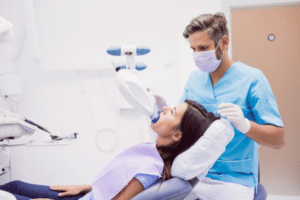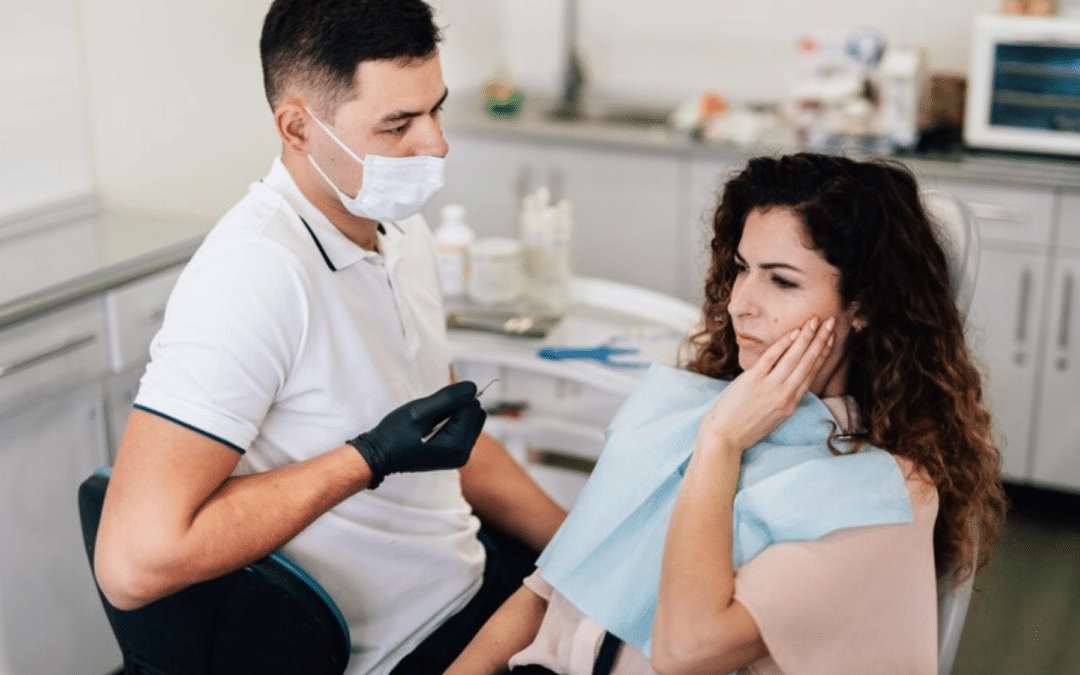For many, a trip to the dentist conjures images of a sterile environment, whirring drills, and an impending sense of anxiety. This dental dread, though common, can be a significant barrier to maintaining good oral health. But what if we told you there’s a way to transform your dental experience into one that’s calm, comfortable, and even, dare we say, relaxing? This blog delves into the world of holistic relaxation techniques, providing you with powerful tools to manage your anxiety and approach your next dental visit with newfound ease. We’ll explore techniques that tap into your mind-body connection, promoting feelings of peace and well-being throughout the appointment.
Understanding Dental Anxiety: It’s More Than Just Fear of the Drill
Dental anxiety is a surprisingly common issue that can affect people of all ages. It’s more than just a dislike of the dentist’s office – it’s a complex web of anxieties that can make even routine checkups feel overwhelming. While fear of pain is certainly a factor, many other elements can contribute to dental anxiety, making it a very real and valid concern. Here’s a deeper dive into some of the common contributors:
Loss of Control: During dental procedures, you naturally relinquish some control to the dentist. This can be a major anxiety trigger, especially for people who generally like to be in charge of situations. The feeling of being vulnerable in the dentist’s chair, with your mouth wide open and tools being used, can heighten anxiety.
Negative Past Experiences: Unpleasant dental experiences, particularly in childhood, can leave a lasting impact. A procedure caused unexpected pain, or the dentist seemed impersonal or dismissive of your concerns. These negative memories can create a cycle of anxiety that gets worse with each dental visit.
Sensory Overload: The sights, sounds, and smells associated with dental procedures can be incredibly overwhelming for some people. The bright lights, the whirring of drills, the metallic scent of instruments – all of these sensory inputs can trigger anxiety and make it difficult to relax.
Claustrophobia: The confined space of the dentist’s chair, combined with having your mouth propped open, can exacerbate feelings of claustrophobia. This can lead to a sense of panic and make it difficult to breathe, further intensifying the anxiety.
Embarrassment about Dental Health: Some people with dental anxiety may feel embarrassed about the condition of their teeth, especially if they haven’t been to the dentist in a long time. This fear of judgment can make them avoid seeking dental care altogether. As a result, it can lead to further problems down the road.
Fear of Needles: For many people, the fear of needles and injections is a major source of dental anxiety. The anticipation of the prick, or the potential discomfort associated with numbing agents, can be enough to cause significant anxiety.

The Power of Holistic Relaxation Techniques
Dental anxiety is a common hurdle, but fear not! Holistic dental relaxation techniques offer a safe and empowering path to a calmer dental visit. Unlike medications, dental relaxation approaches target the root of your anxiety. This allows you to take control of your experience and achieve a state of deep relaxation. Here’s how holistic dental relaxation techniques can transform your dental visit:
Reduce Stress and Anxiety: Techniques like deep breathing and meditation activate the body’s relaxation response. As a result, this lowers your heart rate and calms your nervous system. This shift melts away tension and anxious thoughts, leaving you feeling centered and prepared.
Empowerment Through Choice: Holistic techniques put you in the driver’s seat. You choose the methods that resonate most with you. Whether it’s calming music, soothing aromatherapy, or guided imagery that transports you to a peaceful beach, this sense of control significantly reduces feelings of helplessness, a common trigger for anxiety.
Address the Root Cause: Many fears around dentistry stem from a lack of control or past negative experiences. Techniques like progressive muscle relaxation can help identify and release tension held in the body, potentially linked to past dental anxieties. By addressing these physical manifestations, you can chip away at the root of your fear.
Promote Overall Well-Being: The benefits of holistic relaxation extend far beyond the dentist’s chair. By incorporating these techniques into your daily routine, you can cultivate a sense of calm and inner peace that spills over into all aspects of your life.
Calming Techniques for a Serene Dental Visit
Deep Breathing: This simple yet powerful practice is a cornerstone of relaxation. Focus on slow, deep breaths, expanding your belly with each inhale and exhaling completely. Deep breathing slows your heart rate, lowers blood pressure, and triggers the body’s relaxation response.
Progressive Muscle Relaxation: Tense and relax different muscle groups throughout your body, starting with your toes and working your way up. This helps release tension and brings your awareness to your body’s physical sensations.
Mindfulness Meditation: Mindfulness practices train your attention to stay present in the moment. Focus on the sounds in the room, the feel of your clothing on your skin, or the sensations in your breath. This helps detach from anxious thoughts and worries about the future.
Aromatherapy: Essential oils like lavender, chamomile, and bergamot have calming properties. Diffuse them in the air before your appointment or apply diluted versions topically on your wrists or temples.
Acupressure: Acupressure applies pressure to specific points on your body to promote relaxation. You can learn simple acupressure techniques to target anxiety-relieving points like the space between your thumb and index finger.
Preparing for Your Relaxing Dental Visit
Communication is Key
Express Your Anxiety: Don’t hesitate to let your dentist know you feel anxious about the appointment. Be open and honest about your fears, whether it’s the sounds of the drill, the feeling of being out of control, or past negative experiences.
Discuss Calming Techniques: Talk to your dentist about what helps you relax. Do you prefer calming music, distraction with videos or pictures, or simply knowing what to expect during each step of the procedure? A dentist who understands your needs can tailor the experience to make you feel more comfortable.
Ask Questions: Be bold and ask questions! The more you understand about the procedure, the less apprehensive you’ll feel. Inquire about the tools being used, the sensations you might experience, and what you can do to participate in your comfort throughout the appointment.
Explore Relaxation Options
Consider Nitrous Oxide: Discuss the possibility of using nitrous oxide, also known as laughing gas, with your dentist. This mild sedative can create a feeling of lightheadedness and relaxation, reducing anxiety during your visit. It’s important to note that nitrous oxide doesn’t put you to sleep, and you’ll still be conscious and able to respond to your dentist’s instructions.
Explore Other Techniques: Some dental practices might offer additional relaxation techniques like aromatherapy or hand massage. Ask for our comfort menu to see more options.
By incorporating holistic relaxation techniques into your dental routine, you can transform your experience from one filled with dread to one that’s manageable and even stress-free. Remember, you’re not alone in this. Talk to your dentist, be open about your anxieties, and explore the power of holistic relaxation techniques. With a little preparation and the right tools, you can approach your next dental visit feeling calm, confident, and ready to achieve a healthy smile.



